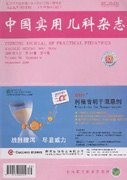|
Exploration of balloon delivery pathway establishment in infantile critical pulmonary stenosis
BING Zhen,PAN Si-lin,LUO Gang,et al
2020, 35(8):
615-619.
DOI: 10.19538/j.ek2020080612
Objective To explore the delivery pathway establishment strategy and its influencing factors of percutaneous balloon pulmonary valvuloplasty(PBPV) in infantile critical pulmonary stenosis(CPS). Methods The clinical data of 30 infants with CPS who underwent PBPV from June 2014 to June 2018 in Qingdao Women and Children’s Hospital were analyzed retrospectively. Groups were divided according to the different methods of delivery pathway establishment(Group A:the conventional method was used to establish the delivery pathway;Group B:the conventional method failed in establishing the delivery pathway and coronary artery guide-wire was used to establish the delivery pathway;Group C:coronary artery guide-wire was used to assist the establishment of the balloon delivery pathway). The data of age,body weight,body surface area(BSA),the diameter of pulmonary valve ring,the diameter of valve orifice,the ratio of balloon valve ring,preoperative transpulmonary valve pressure gradient,pulse oxygen saturation(SpO2),right ventricular systolic pressure(RVSP),operation time and complications during delivery pathway establishment were compared among the three groups. Results Delivery pathway for PBPV was successfully established in the three groups,and there were no serious complications such as tricuspid valve injury,pericardial tamponade or death. There were statistical differences in age,body weight and body surface area between group A and group C,group B and group C(P<0.05),and no statistical differences between group A and group B(P>0.05). There were statistical differences in the diameter of pulmonary valve ring and valve orifice among group A,group B and group C(P<0.05). There was no statistical difference in the ratio of balloon valve ring among the three groups(P>0.05). There was no statistical difference in SpO2 or RVSP among groups A,B and C before treatment(P<0.05). There were statistical differences in operation time between group A and group B,group B and group C(P<0.05),but no statistical difference between group A and group C(P>0.05). Conclusion Age,body weight,BSA,and the diameter of pulmonary valve ring and valve orifice are important factors for choosing the way of delivery pathway establishment in infants with CPS. When conventional methods don’t work in establishing the delivery pathway,coronary artery guide-wire,especially double coronary artery guide-wire method,can be used to establish balloon delivery pathway. It is safe and effective,which is worth popularizing and applying.
|

